September 11, 2025

The article titled "10 Essential Behavior Intervention Strategies for Educators" underscores the critical techniques that educators must implement to effectively manage student behavior. It emphasizes that strategies such as:
are essential for fostering a supportive learning environment. These methods not only address behavioral challenges but also significantly enhance overall educational outcomes by promoting engagement and cooperation among students, teachers, and families. Educators are encouraged to consider how these strategies can transform their approach to behavior management, ultimately leading to a more conducive learning atmosphere.
In the ever-evolving landscape of education, the demand for Board Certified Behavior Analysts (BCBAs) is projected to rise significantly. This increasing need underscores the critical importance of effective behavior intervention strategies. Educators face the challenge of implementing tailored approaches that not only foster positive student behavior but also enhance classroom management. This article explores ten essential strategies designed to promote a supportive learning environment.
How can educators navigate the complexities of student behavior to ensure every learner thrives? The answer lies in adopting innovative solutions that empower both educators and students alike.
Hire ABA plays a crucial role in linking Board Certified Behavior Analysts (BCBAs) with premier job opportunities in the Applied Behavior Analysis (ABA) therapy sector. With the demand for BCBAs projected to surge by 25% by 2026, educational institutions must adapt to this growing need. They must ensure access to qualified professionals capable of implementing effective behavior intervention strategies as outlined in the list of behavior intervention strategies pdf in classrooms.
Our personalized resume assessments guarantee that candidates are matched with roles aligning with their experience and career goals. Utilizing advanced job fit scoring, we identify opportunities that suit their skills, preferences, and desired locations. This connection not only provides access to expertise but also enhances the overall educational experience for learners.
For instance, Ascend Behavior Partners significantly improved its offer acceptance rate from 50% to 90% by revamping its hiring process to better showcase company culture. This demonstrates the effectiveness of strategic hiring in attracting top talent. Glenn R. Carroll emphasizes the importance of showcasing a company’s culture during the hiring process, stating, "Identify opportunities to apply hiring and talent acquisition lessons learned to other organizations."
Such are essential in ensuring that schools have the necessary resources to support learners' behavioral and educational needs, which can be found in the list of behavior intervention strategies pdf. Furthermore, the implementation of ABA therapy has been shown to positively impact educational institutions by fostering an environment conducive to learning and behavioral development.
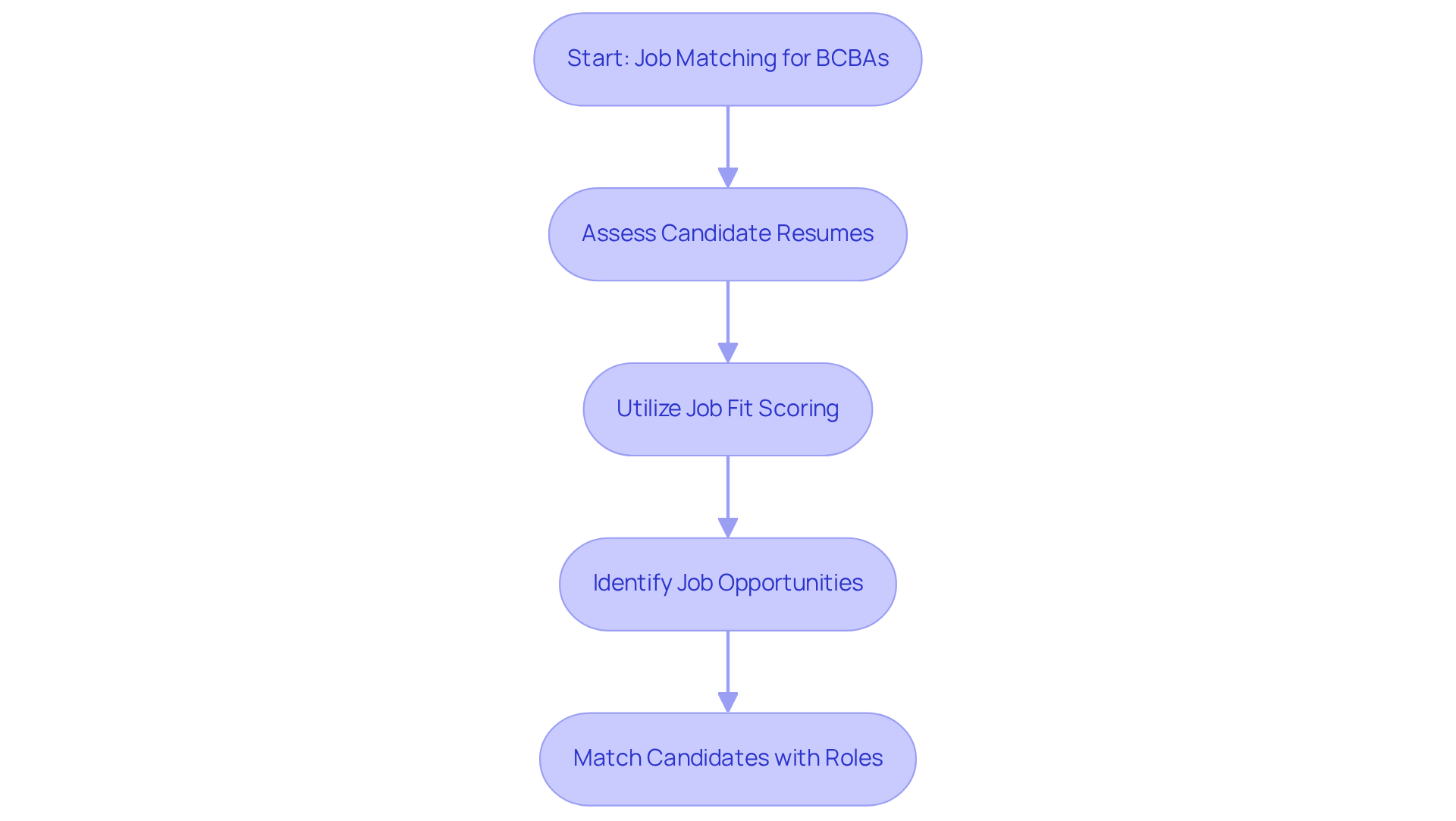
Positive conduct interventions focus on reinforcing desirable actions while minimizing negative behaviors. Establishing clear expectations, offering consistent feedback, and utilizing visual aids are essential strategies in this approach. By cultivating a positive classroom atmosphere, educators can significantly boost student involvement and decrease disruptive actions.
How can these strategies transform your classroom dynamics? Embrace the power of positive reinforcement to create an engaging learning environment.
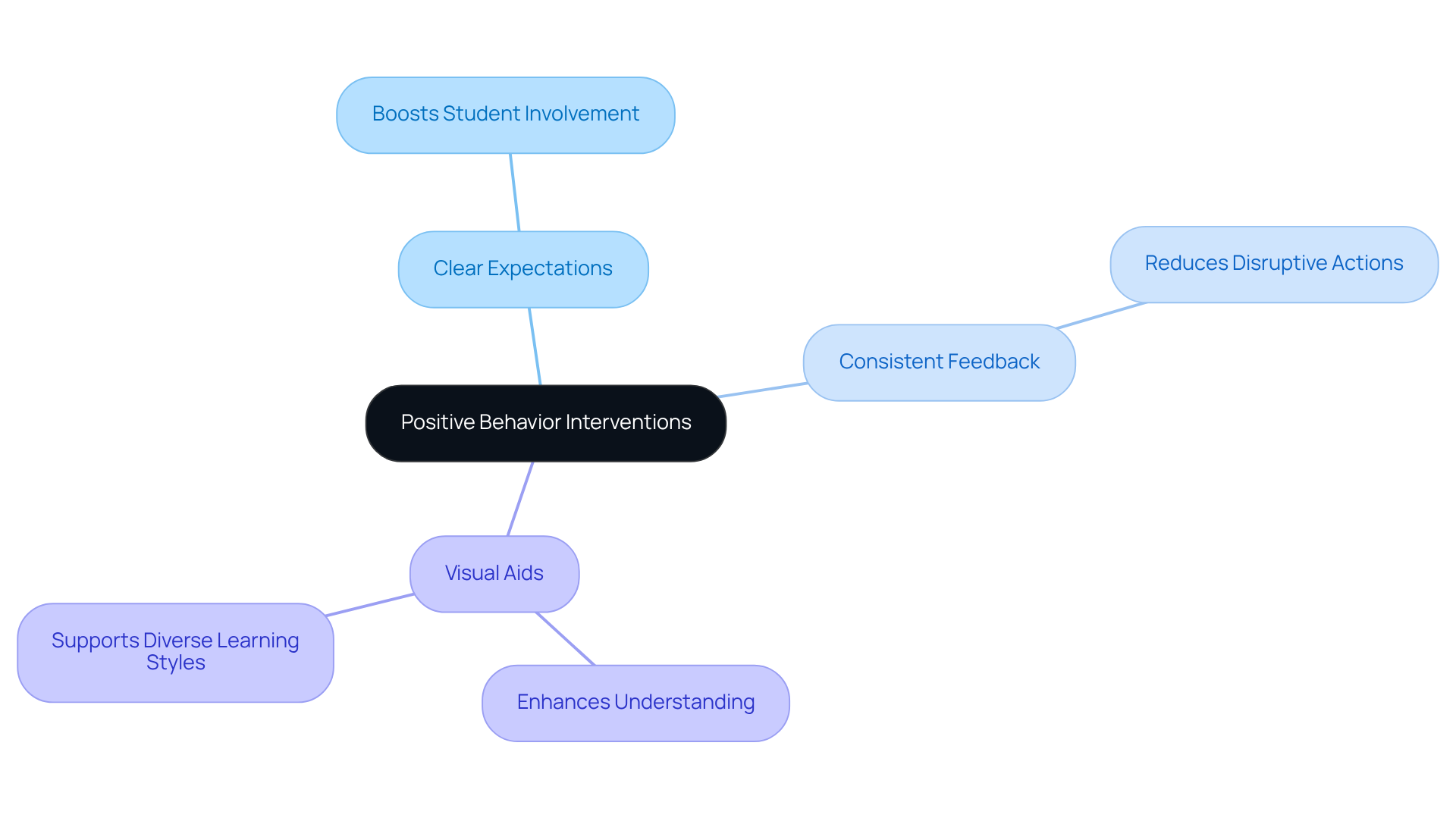
A Behavior Intervention Plan (BIP) is crucial for effectively addressing challenging behaviors. It outlines specific strategies that are part of the list of behavior intervention strategies pdf, including:
Implementing a BIP is not a solitary endeavor; it necessitates the collaboration of teachers, parents, and (BCBAs) to ensure consistency and effectiveness in meeting the needs of learners. Are you aware of the significant impact a well-structured BIP can have on student success? By fostering teamwork among all parties involved, we can create an environment that promotes positive behavioral change.
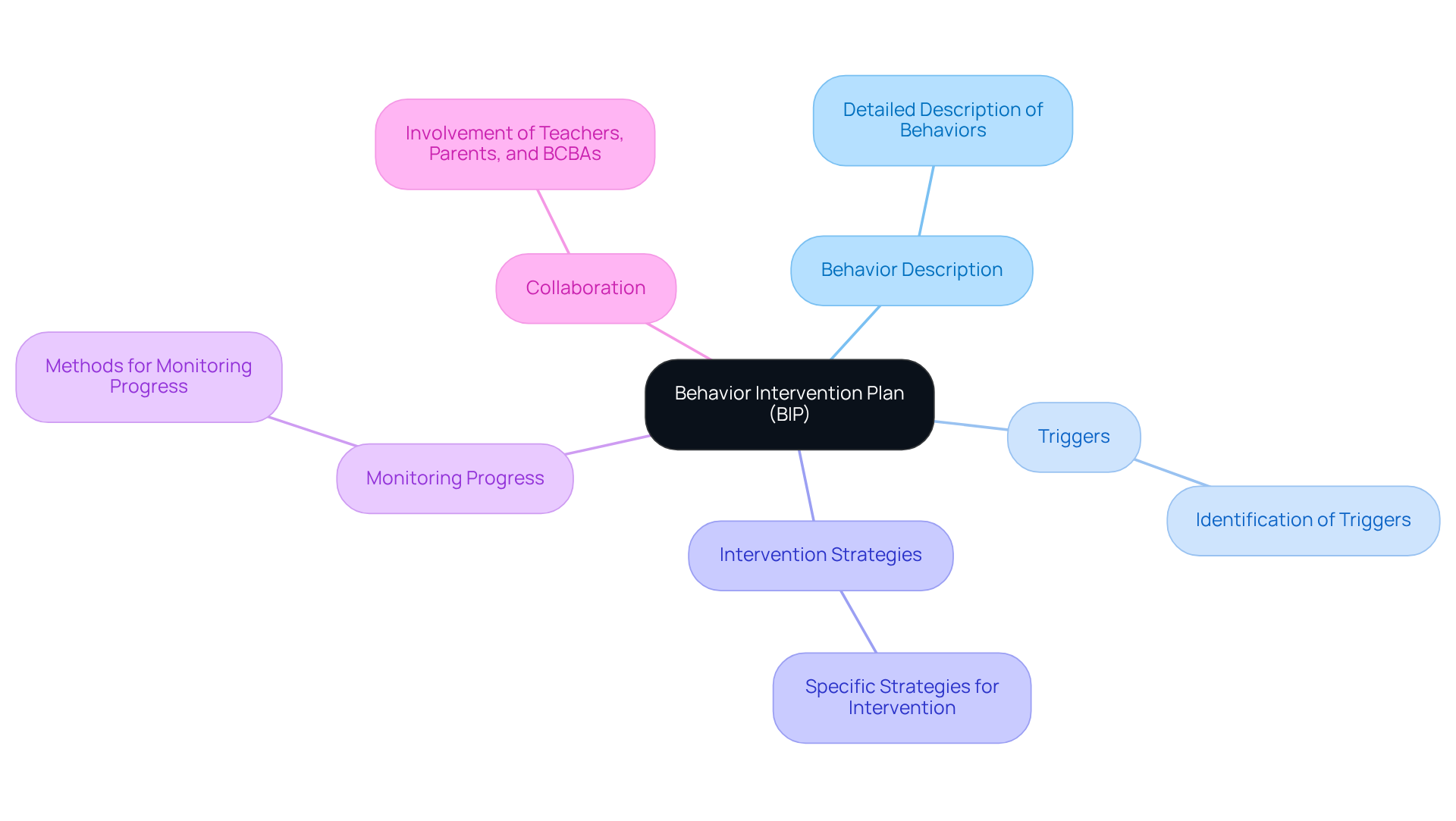
A Functional Behavior Assessment (FBA) serves as a systematic approach to uncover the reasons behind a student's challenging behaviors. By analyzing antecedents, actions, and consequences, educators gain critical insights into the triggers of specific behaviors. This understanding is essential for developing that address the root causes of behavior, which can be found in the list of behavior intervention strategies pdf, rather than merely treating the symptoms.
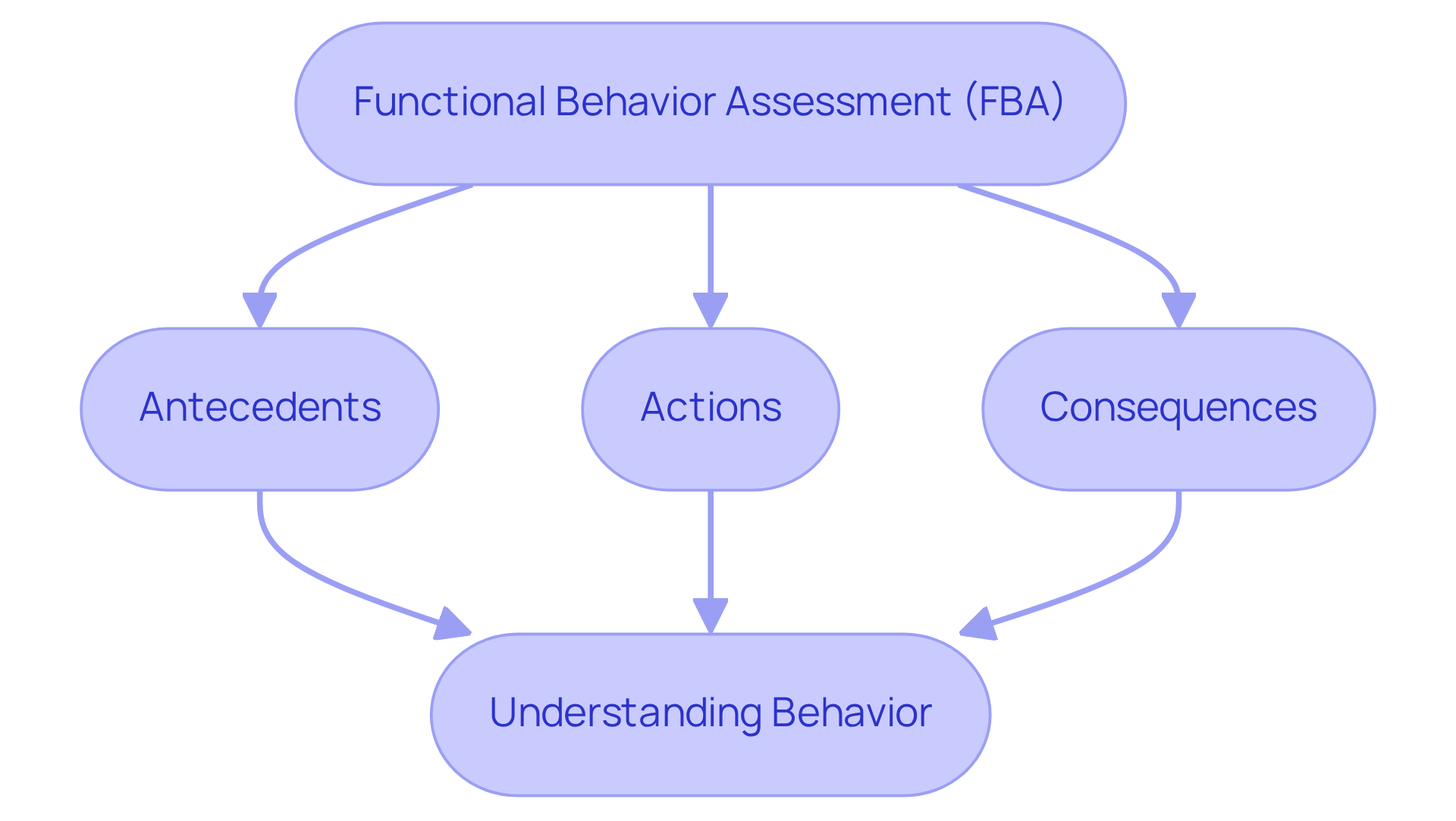
Efficient data gathering methods are essential for tracking the progress of support strategies. Methods such as:
allow teachers to systematically monitor student behavior. This continuous evaluation is crucial for assessing the impact of measures and making necessary modifications. Frequent examination of gathered data enables instructors to recognize trends and patterns, ensuring that interventions remain relevant and effective. For instance, educators can analyze homework grades and test scores to pinpoint specific areas where learners struggle, leading to targeted strategies that enhance learning outcomes.
Participating in conversations regarding different data sources, such as pupil reflections and project results, fosters a cooperative atmosphere where teachers can refine their instructional methods. As Dr. Steele emphasizes, "Teachers need time to engage regularly in conversations with colleagues about a wide range of data sources." By utilizing data-informed decision-making, teachers can not only enhance individual learner performance but also contribute to a more efficient overall educational approach.
However, it is essential to recognize the limitations of data analysis, as not all data may be applicable across different contexts. Understanding these constraints assists teachers in making informed choices and preventing .
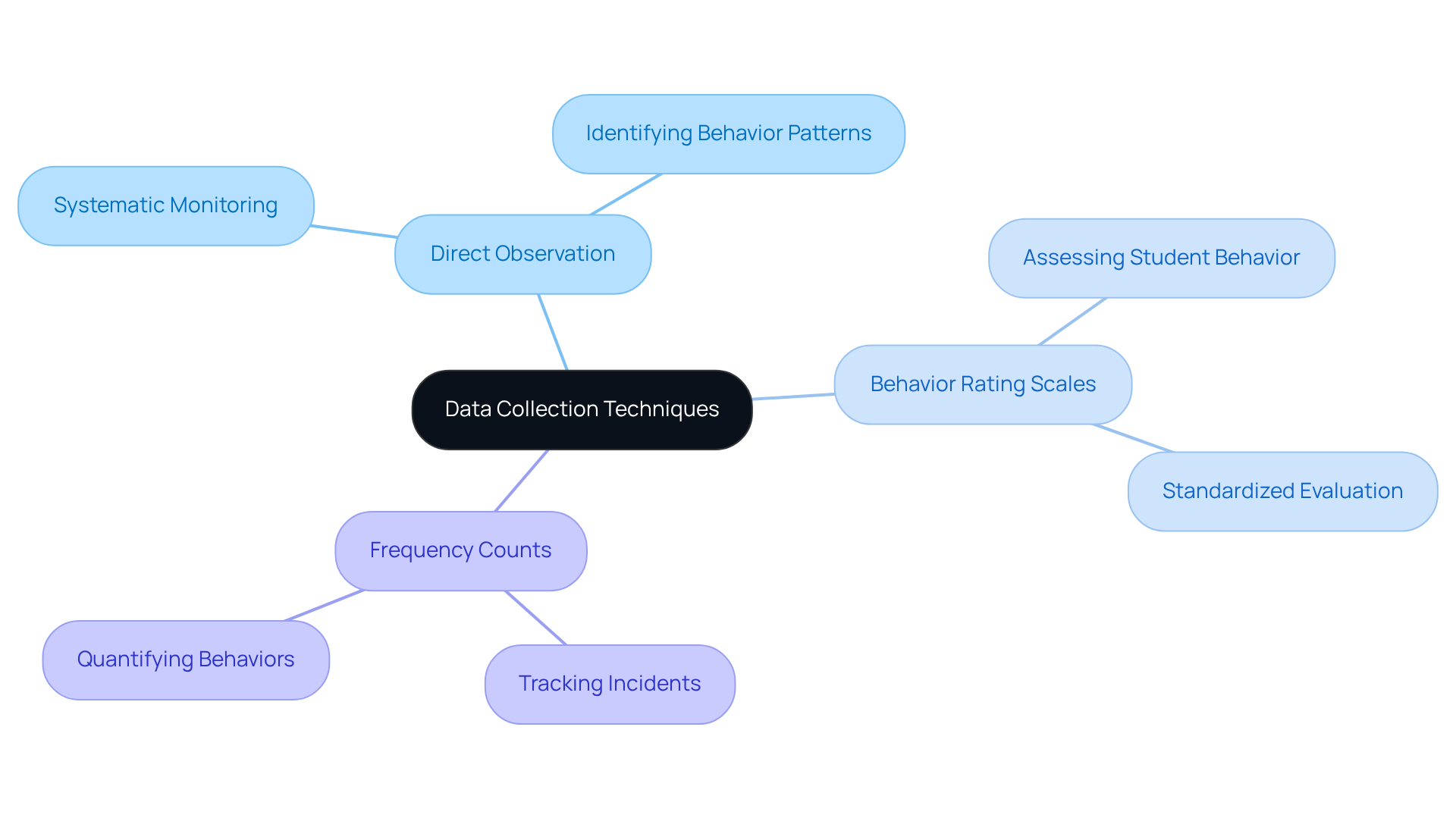
Personalized interventions are essential for meeting the distinct needs of each learner, as detailed in the list of behavior intervention strategies pdf. They enable educators to adjust teaching approaches, offer extra assistance, and apply targeted reinforcement strategies. This customized method not only promotes a more inclusive learning atmosphere but also improves positive outcomes. For instance, at Catherine Hershey Schools, Behavior Intervention Specialists (BIS) utilize a multi-tiered system to provide varying levels of support based on individual needs. This approach has proven effective in helping children develop such as self-regulation and social interaction.
Additionally, BIS professionals conduct weekly 'friendship groups' and 'enrichment groups' that focus on social and emotional development, further supporting learners' growth. Recent research underscores the significance of customizing strategies, demonstrating that personalized behavior plans, as detailed in the list of behavior intervention strategies pdf, lead to substantial growth in both academic and social-emotional domains. Educators have observed that establishing strong connections with learners and their families is a crucial element of effective interventions, as it fosters a supportive environment that promotes learning.
As Lindquist, a Behavior Intervention Specialist at CHS, states, "The most rewarding part about my job is building positive, impactful relationships with the teachers, students, families, and our amazing CHS Hershey team." By focusing on the individual, educators can significantly improve the educational experience for diverse learners, ensuring that every child has the opportunity to thrive.
To apply these strategies successfully, healthcare employers should consider setting up regular check-ins with families to encourage communication and personalized assistance.
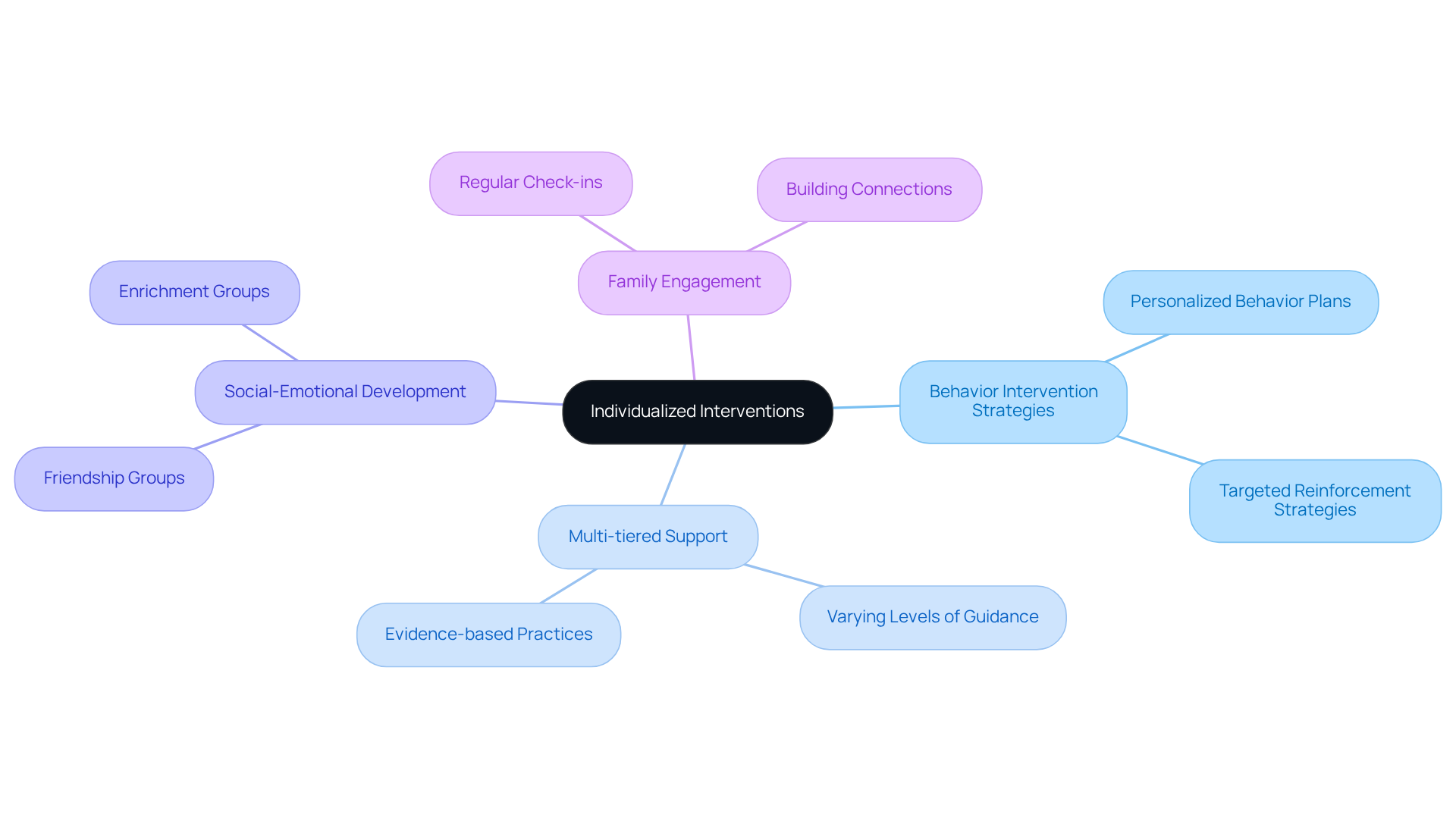
Collaborative methods are essential in the , involving all parties—parents, teachers, and BCBAs. By working together, these stakeholders develop and implement effective strategies. Consistent communication and feedback among all parties ensure alignment, fostering a supportive atmosphere for the student's success. This approach not only enhances the effectiveness of interventions but also cultivates a community committed to positive change.
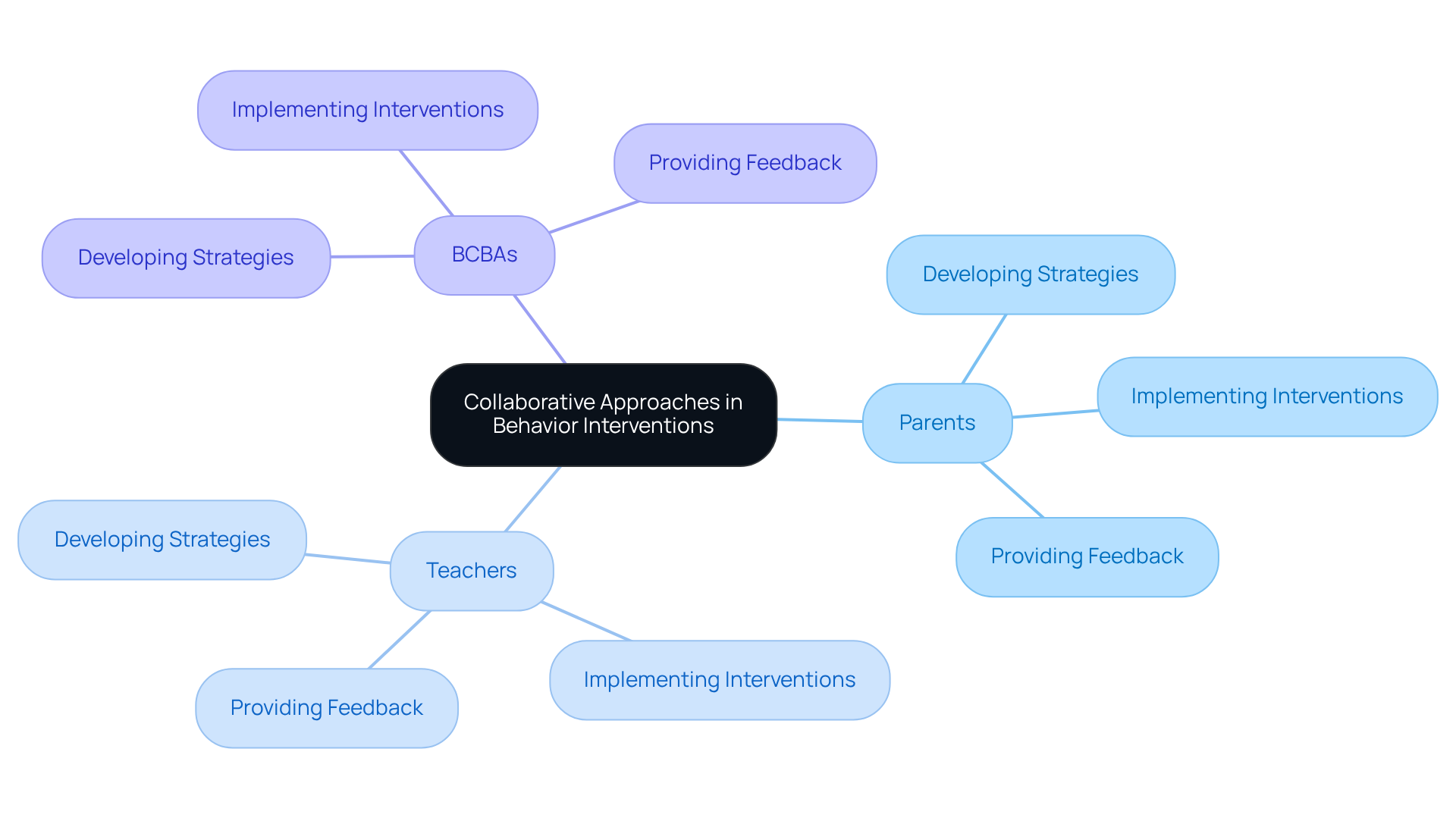
Professional growth initiatives centered on conduct strategies are essential for teachers, providing them with the latest research, tactics, and resources. Workshops, seminars, and online courses significantly enhance teachers' understanding of and effective intervention techniques. Ongoing education ensures that teachers are thoroughly prepared to meet diverse learner requirements and implement optimal strategies in conduct management.
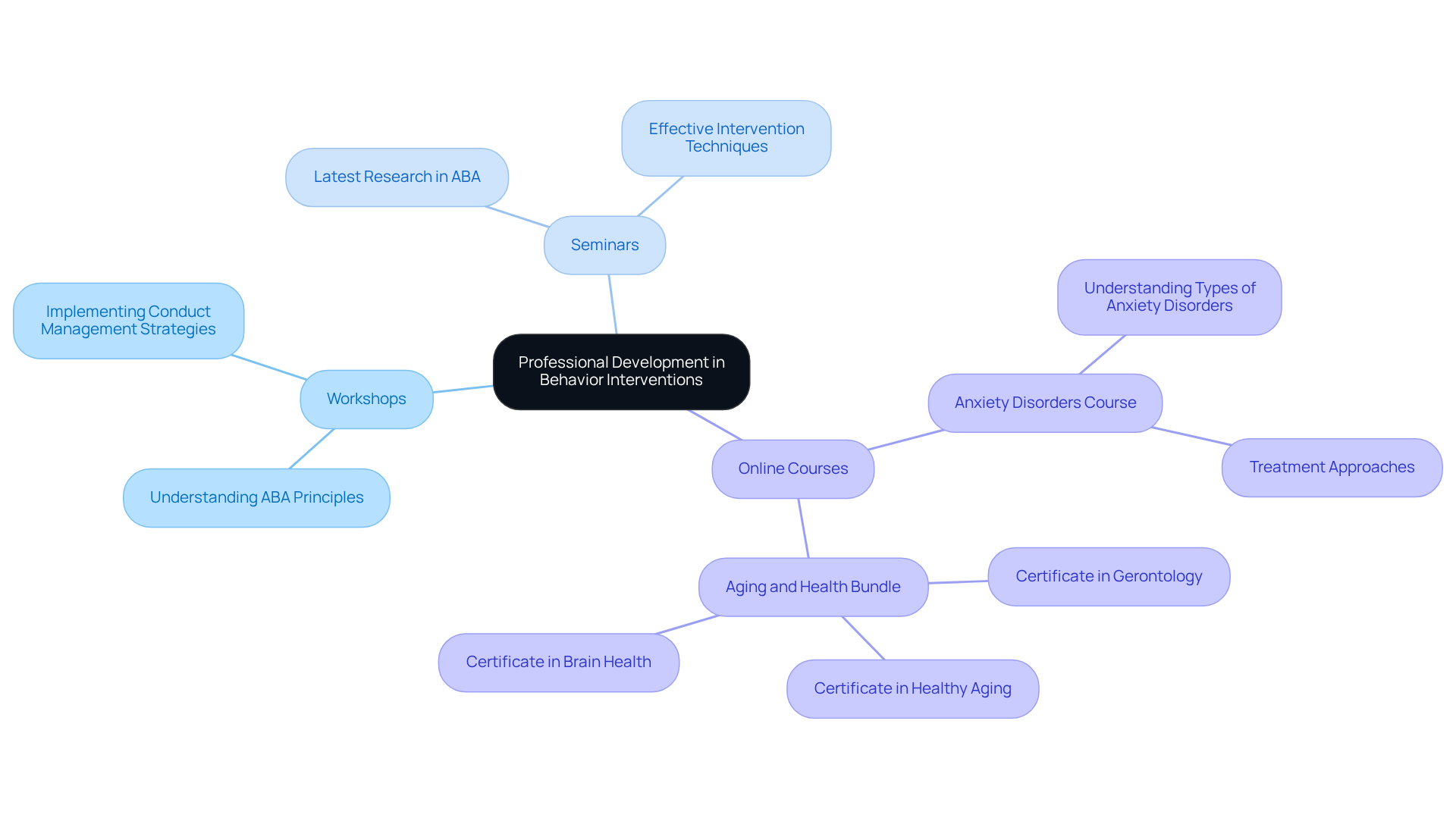
Positive reinforcement methods are essential for promoting preferred behaviors in educational environments. By providing rewards such as verbal praise, tangible incentives, or privileges, educators can effectively motivate learners to engage in appropriate behaviors. Research indicates that of positive actions not only enhances student engagement but also cultivates a more supportive classroom atmosphere. Various types of rewards can be utilized, including:
The effective implementation of these strategies requires prompt reinforcement following the desired action, as this strengthens the connection between the behavior and the reward. Notably, research has shown that positive reinforcement significantly reduces non-compliant behaviors. One remarkable case involved a seven-year-old boy with autism, whose non-compliant actions decreased from an average of 79.80 to just 16.00 per day after the application of reinforcement strategies.
Behavior specialists emphasize that recognizing and rewarding positive actions not only motivates learners but also boosts their self-esteem and confidence, enabling them to maintain these behaviors over time. However, caution is warranted regarding the overuse of tangible rewards, as this can lead to disincentivization when such rewards are not consistently provided. Overall, the principles of positive reinforcement foster a more productive and harmonious educational environment, empowering learners to excel.

Crisis intervention strategies are essential for effective management of challenging behaviors in educational settings. These strategies encompass both and immediate response techniques. It is crucial for educators to be well-trained in:
By adopting a structured approach to crisis situations, educators not only minimize disruptions but also ensure a safe learning environment for all students. This proactive stance is vital in fostering an atmosphere conducive to learning and development.
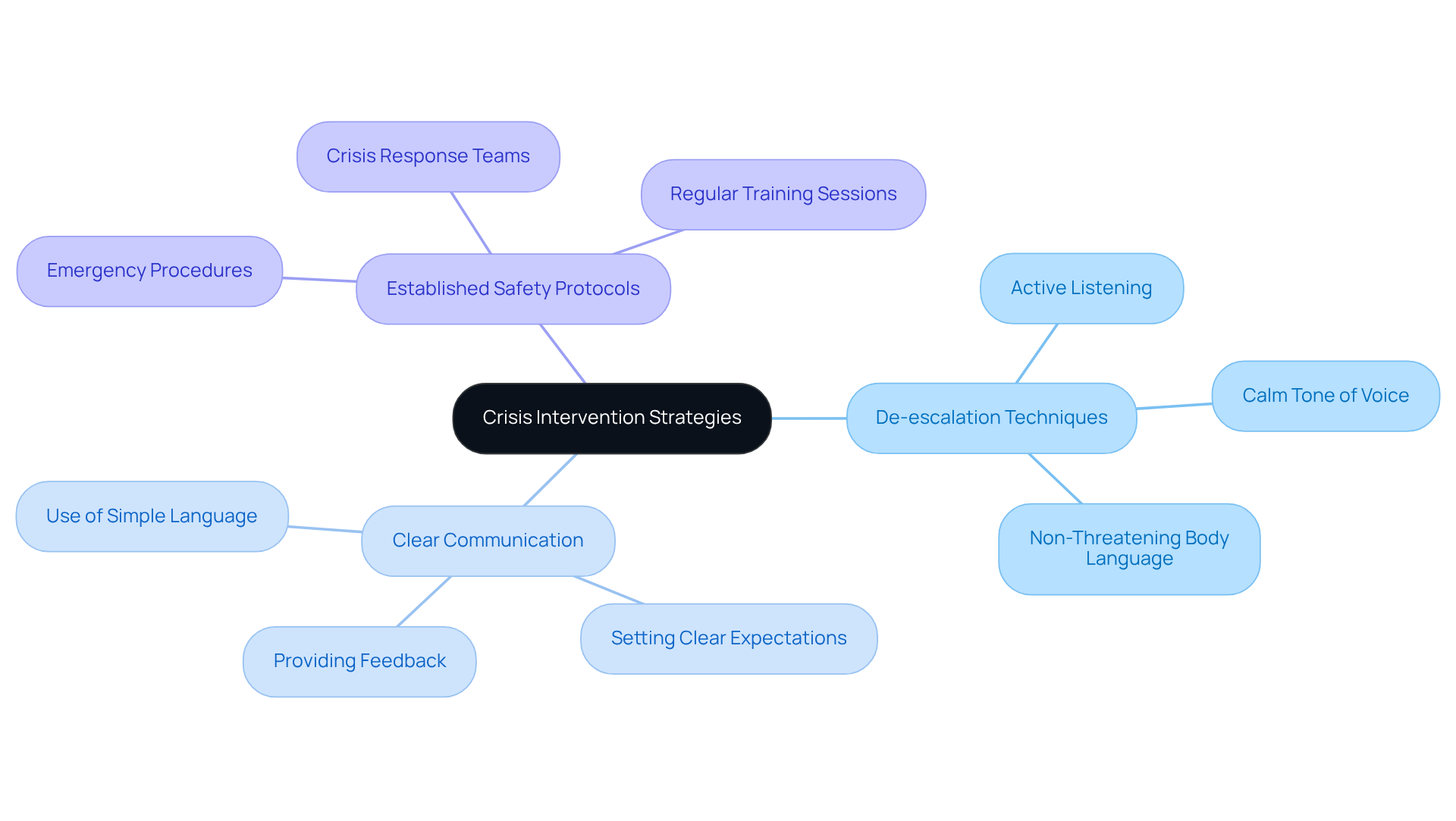
Implementing effective behavior intervention strategies is crucial for educators aiming to foster a positive learning environment. Understanding and applying techniques such as positive reinforcement, individualized interventions, and collaborative approaches significantly enhances student engagement and reduces disruptive behaviors. These strategies address immediate classroom challenges and contribute to the long-term success of students by promoting behavioral and academic growth.
Key insights highlight the importance of personalized support through Behavior Intervention Plans (BIPs) and Functional Behavior Assessments (FBAs). These tools allow educators to tailor their approaches to meet the unique needs of each learner. Moreover, the role of professional development in equipping teachers with the latest strategies and knowledge is paramount. Ongoing training ensures that educators remain effective in their practices.
Ultimately, the commitment to implementing these behavior intervention strategies can transform educational settings, creating a culture of support and success. Educators are encouraged to embrace these methods, engage with all stakeholders, and continuously seek professional growth. By prioritizing effective behavior management techniques, schools cultivate an atmosphere where learning flourishes, and every learner has the opportunity to reach their full potential.
What is Hire ABA?
Hire ABA is a service that connects Board Certified Behavior Analysts (BCBAs) with job opportunities in the Applied Behavior Analysis (ABA) therapy sector, addressing the growing demand for BCBAs.
What is the projected demand for BCBAs by 2026?
The demand for BCBAs is projected to surge by 25% by 2026.
How does Hire ABA match candidates with job opportunities?
Hire ABA uses personalized resume assessments and advanced job fit scoring to match candidates with roles that align with their experience, skills, preferences, and desired locations.
What impact did Ascend Behavior Partners experience by improving its hiring process?
Ascend Behavior Partners improved its offer acceptance rate from 50% to 90% by enhancing its hiring process to better showcase company culture.
Why is showcasing a company's culture important during the hiring process?
Showcasing a company's culture is important as it helps attract top talent and ensures that schools have the necessary resources to support learners' behavioral and educational needs.
What are positive behavior interventions?
Positive behavior interventions focus on reinforcing desirable actions while minimizing negative behaviors, which includes strategies like establishing clear expectations and offering consistent feedback.
How can positive behavior interventions transform classroom dynamics?
By cultivating a positive classroom atmosphere through reinforcement strategies, educators can significantly boost student involvement and decrease disruptive actions.
What is a Behavior Intervention Plan (BIP)?
A Behavior Intervention Plan (BIP) is a structured plan that outlines strategies to address challenging behaviors, including a detailed description of behaviors, identification of triggers, intervention strategies, and methods for monitoring progress.
Who should collaborate in implementing a BIP?
Implementing a BIP requires collaboration among teachers, parents, and Board Certified Behavior Analysts (BCBAs) to ensure consistency and effectiveness in addressing learners' needs.
What is the significance of a well-structured BIP?
A well-structured BIP can significantly impact student success by fostering teamwork among all parties involved, creating an environment that promotes positive behavioral change.
Our expert recruitment strategies and AI-driven sourcing ensure that you receive top-notch candidates quickly, without compromising on quality. Whether you’re looking for BCBAs, Clinical Directors, or RBTs, we’ve got you covered.